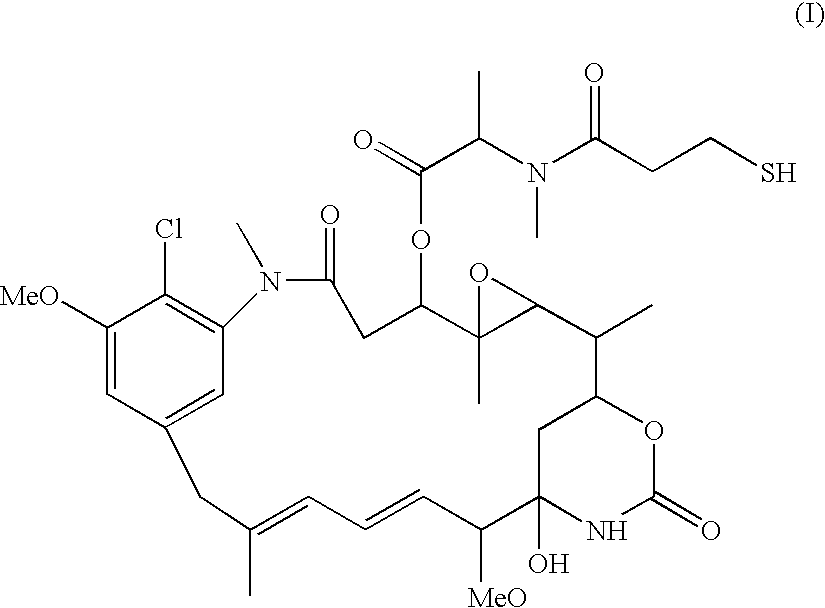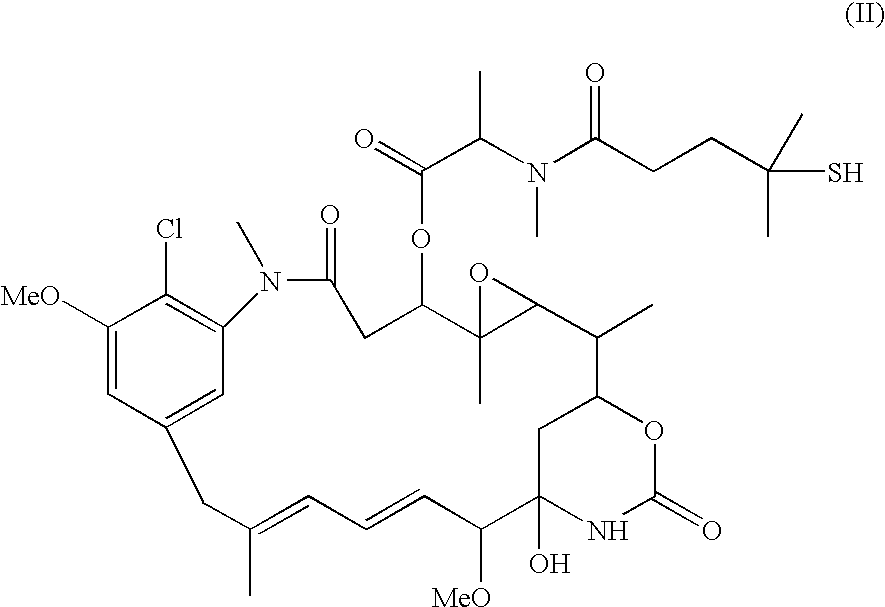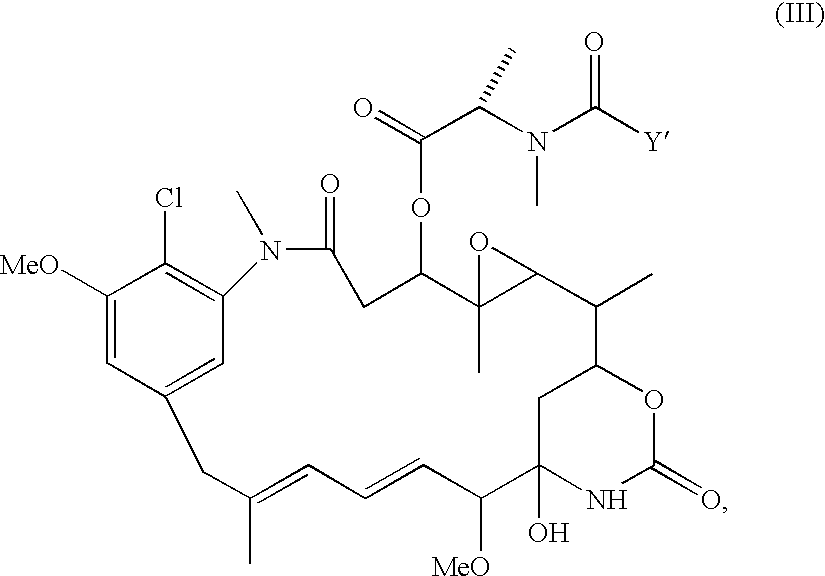Process for preparing purified drug conjugates
a technology of conjugates and purified drugs, which is applied in the field of conjugate preparation, can solve the problems of complex process, slow and inefficient conjugation at a ph between 6.0 and 6.5, and achieve the effect of high purity and stability
- Summary
- Abstract
- Description
- Claims
- Application Information
AI Technical Summary
Benefits of technology
Problems solved by technology
Method used
Image
Examples
example 1
[0084]This example demonstrates the purification of an antibody modified with a heterobifunctional modification reagent using TFF.
[0085]The huN901 monoclonal antibody (final concentration of 8 mg / ml) was incubated with N-succinimidyl 4-(2-pyridyldithio)pentanoate (SPP, 5.6-fold molar excess) for approximately 180 minutes at 20° C. in 50 mM potassium phosphate buffer (pH 7.5) containing 50 mM NaCl, 2 mM EDTA, and 5% ethanol. In a first group, the reaction mixture was purified using a column of Sephadex™ G25F resin equilibrated and eluted in 50 mM potassium phosphate buffer (pH 6.5) containing 50 mM NaCl and 2 mM EDTA. In a second group, the reaction mixture was purified using a Pellicon XL TFF system (Millipore, Billerica, Mass.), and the antibody was diafiltered (5 volumes) into 50 mM potassium phosphate, 50 mM NaCl (pH 6.5), and 2 mM EDTA using a 10,000 molecular weight cutoff membrane (Ultracel™ regenerated cellulose membrane, Millipore, Billerica, Mass.). Both samples were conjug...
example 2
[0090]This example demonstrates the purification of an antibody modified with a heterobifunctional modification reagent using adsorptive chromatography.
[0091]The huB4 antibody was modified with N-succinimidyl 4-(2-pyridyldithio)butanoate (SPDB, 5.4 fold molar excess) for 120 minutes at room temperature in 50 mM potassium phosphate buffer (pH 6.5) containing 50 mM NaCl, 2 mM EDTA, and 5% ethanol. In a first group, the reaction mixture was purified using the Sephadex™ G25F resin as described in Example 1. In a second group, the reaction mixture was loaded onto a column of ceramic hydroxyapatite (CHT, Bio-Rad Laboratories, Hercules, Calif.), which was equilibrated in 12.5 mM potassium phosphate buffer (pH 6.5) and eluted with 80 mM potassium phosphate buffer (pH 6.5).
[0092]In both groups, yields and linker / antibody ratios were determined as described in Example 1. The first group had a 91% yield and 4.2 linker / antibody ratio. The second group had a 89% yield and a 4.2 linker / antibody r...
example 3
[0096]This example demonstrates the beneficial effects of conjugating a modified antibody with a drug at a pH of above 6.5.
[0097]In a first experiment, CNTO95 antibody was modified and purified as described in Example 2. The modified antibody was then divided into two groups. In the first group, conjugation was performed in 12.5 mM potassium phosphate at pH 6.5 containing 12.5 mM NaCl, 0.5 mM EDTA, 3% DMA, and 1.7 fold molar excess drug per linker at 20° C. In the second group, the conjugation reaction was at pH 7.5. The conjugated antibody was purified over NAP-10 columns.
[0098]The drug / antibody ratio was measured for both groups. The resulting data are set forth in Table 2.
[0099]
TABLE 2Drug / Antibody Ratio at Conjugation Reaction of pH 6.5 versus 7.5Drug / Antibody RatioDrug / Antibody RatioReactionat Conjugationat ConjugationTime (hours)Reaction pH 6.5Reaction pH 7.50.5—3.012.33.41.5—3.522.83.52.75—3.63.53.23.653.43.7
[0100]As shown by the data set forth in Table 2, conjugation proceed...
PUM
| Property | Measurement | Unit |
|---|---|---|
| pH | aaaaa | aaaaa |
| pH | aaaaa | aaaaa |
| pH | aaaaa | aaaaa |
Abstract
Description
Claims
Application Information
 Login to View More
Login to View More - R&D
- Intellectual Property
- Life Sciences
- Materials
- Tech Scout
- Unparalleled Data Quality
- Higher Quality Content
- 60% Fewer Hallucinations
Browse by: Latest US Patents, China's latest patents, Technical Efficacy Thesaurus, Application Domain, Technology Topic, Popular Technical Reports.
© 2025 PatSnap. All rights reserved.Legal|Privacy policy|Modern Slavery Act Transparency Statement|Sitemap|About US| Contact US: help@patsnap.com



